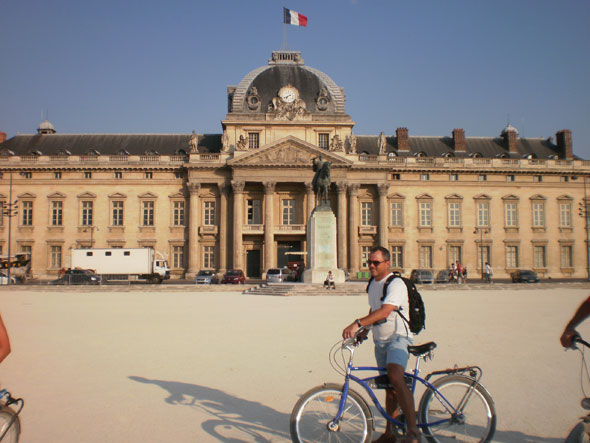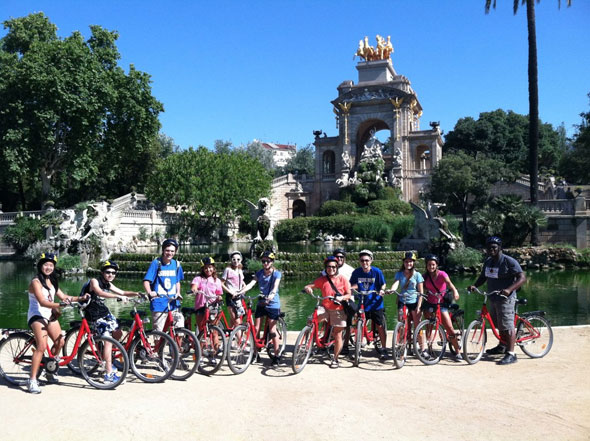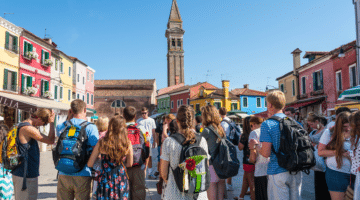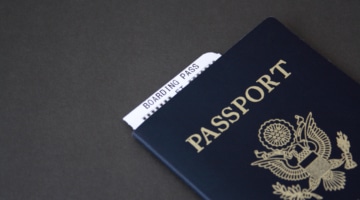Why Biking is the Best Way to Explore!

What’s the best way to see a city? A coach tour gives you a great introduction to a city, but you are a long way from the action and have a limited view, and there’s no way to stop and get off when you see something interesting. Boats are fun, but you need a river, so they can never show the whole picture. Walking is great—but it gets tiring after a mile or two. And it’s sooo slow! Fine for small towns, but not enough for big cities.
No, the best way to see a city is by bike! On a bike, you are mistress of your own time, you decide where you want to go, you are part of the action, part of the buzz. You can slow down, speed up, get off and push—and most importantly, you can stop whenever you find a picturesque street, or a pretty view or a tasty bakery.
Lots of ACIS trips include bicycle sightseeing tours, and of course, bicycle rental shops have existed for decades, although they are often hard to find or impractical to get to (unless you already have a bike—but then, of course, you wouldn’t need bike rental, obviously). Luckily, many cities around the world now make it easy to just grab a bicycle and go for a ride.
and go for a ride.
Public bicycle rental—or bike sharing—schemes have been spreading throughout Europe for the last eight or nine years. They are designed for commuters to get around, to relieve numbers on over-crowded bus and underground systems and lure people from using their cars to get to work on congested roads.
Most bike sharing systems work in much the same way. You pay a small daily fee, but then you can use bikes all day. There are bicycle stations all over the city, and you don’t have to return the bike to the same place you picked it up. You unlock the bike in one place, and deposit it somewhere else, at the closest bike station to your destination. If you deposit it within thirty minutes, your journey is free. Ten minutes later, you can rent another bike, and again the first thirty minutes are free. And so on, all day. Free rides, provided you don’t go over your thirty minute allowance on any one window. Even if you do, the next half hour is usually fairly cheap. After that the price increases rather steeply.
The idea is for people to use the bikes for short trips, not to rent them for long periods. They are aimed at local residents, rather than sight-seeing visitors. But they are ideal for sight-seeing visitors! Thirty minutes gets you a long way on a bike, even at the most leisurely pace. You’re never going to get from Notre Dame to Versailles on a Velib’ (the Parisian version or the city rental bike). But you wouldn’t want to. Instead, you easily breeze between monuments and museums, or between lunch and the next patisserie. And as you do, you will always, without fail, see something new or interesting or unusual.
I’ve visited Paris more times than I dare admit, and I always love cycling there for that very reason. You discover new perspectives, alternative itineraries, unusual back streets. If you know roughly where you’re going, you can risk new routes. Even if you get lost, you can navigate your way back quickly enough on a bike. Of course you should always carry a map with you, but if it gets blown away crossing the Pont Neuf, there are always partial maps displayed at bus stops and bike stations to help you find your way. Even in London, if I’m in the centre of town I often use the bike scheme—colloquially known as Boris Bikes, after the mayor who was in power when they were launched. Cycling around London feels just as interesting, liberating and revealing as when I’m traveling to other cities. And I can swear at bad drivers more accurately.
Of course, not everything is plain sailing (or free wheeling). These are not speedy thoroughbreds. Rental bikes are robust enough for city streets and extreme weather. They are heavy, clunky and fairly slow. They have three gears (and an adjustable seat), but they are designed for reliability, not speed. On the other hand, if you’re sight-seeing, what’s the hurry? And the slower you go, the less likely you are to get into trouble. Generally they are well-maintained, but you should always test the brakes and tires before you set off. If you’re not happy with them—especially the brakes—put the bike back where you got it from and select another. You might have to wait a few minutes, but it’s better than riding around on dodgy brakes!
Also, beware of other road users! The scenery might be prettier than back home, but the drivers aren’t any better, and sometimes considerably worse. In London, taxis, particularly, take a dim view of anything on two wheels, even if you stick to the excellent network of cycle lanes (as you should). And don’t even think about cycling on the pavement unless specifically invited to do so by the road markings. Pedestrians take an even dimmer view.
Another problem can be finding the docking stations empty when you want to pick up a bike, or completely full when you want to drop one off. In either case, there will be an alternative nearby.
Unfortunately, not all bike sharing schemes are open to non-residents, and even when they are, you will almost certainly need a credit or debit card with a “chip and pin.” These are ubiquitous in Europe, but not many American banks seem to issue them. (If you’re not sure, look at your card, which needs to have a square metal grid on the front. And if you don’t have one, get one! They’ll make your life in Europe a lot easier!)
The London and Paris bike sharing systems, for example, are open to visitors with “chip and pin” cards. In Barcelona, in contrast, you have to have a local address, and apply two weeks in advance, which makes Bicing (the Barcelona version) impossible for visitors. Rome, on the other hand, is in transition. Until recently, their rental scheme was like their roads: rough, dangerous and full of holes. London had Boris Bikes, which were smooth, whereas Rome had Berlusconi Bikes, all show and no substance. There are plans for a new system, but so far it has yet to materialise.
The only trouble is that cycling in cities is so much fun it’s addictive. Once you’ve tried it, you’ll find walking slow and very pedestrian.
Interested in reading more? Pedal over to the Travel Ebook where you’ll get insights into how student travel has shaped the educational lives and professional careers of more than 900 former travelers.












